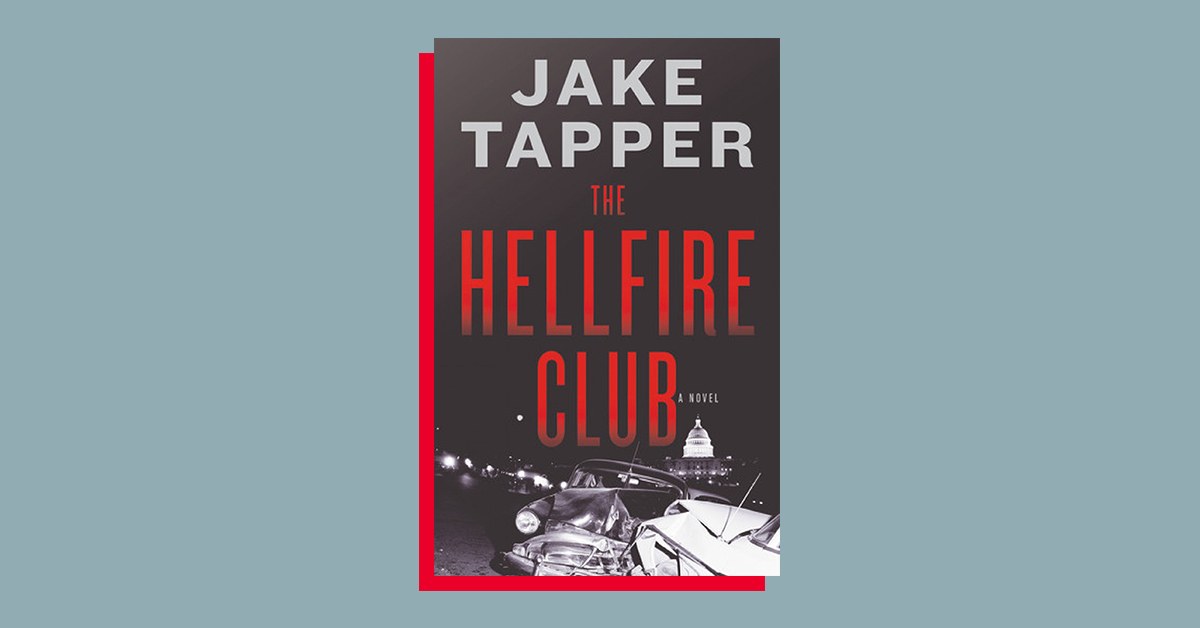Jake Tapper on 'Hellfire Club': I Knew I Wanted to Write a Strong Woman

If you’ve taken Fiction 101, you may be aware of the golden rule: Write what you know. CNN chief Washington correspondent Jake Tapper stuck to this idea when he wrote his debut political thriller—to an extent. The Hellfire Club is rife with Beltway intrigue and backroom deals, but Tapper’s leading lady is what kept us turning pages. And we’re not alone: Margaret has been praised by Nicole Wallace and Elizabeth Banks, and is perhaps best described by a member of Senator Kirsten Gillibrand‘s staff as a “resourceful badass” and “true queen.” We checked in with Tapper to find out how it feels to be the creator of a woman readers won’t be able to stop thinking about.
Glamour: I know you’re getting all kinds of praise for your Margaret. Can you tell me a little bit about how she came to be?Jake Tapper: As a reader of thrillers, I was well aware that the usual formula is for a single, studly James Bond type to jump from martinis to romance to shootouts. I knew I wanted Charlie Marder to be married to a woman he was madly in love with, and I knew I wanted her to be strong. I think that’s sexier and more romantic than the normal prototype. As a fan of Nick and Nora from The Thin Man, I started off wanting them to have what I hope is witty repartee. As Charlie begins to compromise his principles, Margaret objects to what’s happening to the man she loves and admires. From there, she took on a life of her own.
Glamour: Have you been surprised by the response?JT: Absolutely. I don’t pretend to be Mr. Woke 2018 or to have any special insight into women. I’m just a normal meatheaded man, though I do read, so I’m aware of feminist criticism of art made by men—the Bechdel Test and such. So I’m kind of amazed readers out there think I pulled it off.
Glamour: What was it like to write a woman who is pregnant? I’d love to hear a little bit about your research here.JT: The first challenge was to give Margaret her own complicated backstory, involving her own family struggles and interests and ambitions. Then I wrote for her as I would for any character, though with more noble motivations, since she’s such a kind person of such character. When the book starts, Margaret has just found out she’s pregnant, so I did a lot of checking with my editor, who happens to be a woman, and also my wife (we have two kids), to make sure the physical challenges she faces as she enters her second trimester were even possible. There were some scenes that had to be rewritten because my editor insisted there wasn’t a pregnant woman alive who who would have Margaret’s stamina.
Glamour: Do you think the experience of writing Margaret has made you a better colleague, husband, or friend—or a more empathic one?JT: The simple answer is no. But I do think it’s make me a more critical reader when it comes to the roles of women in fiction, as written by men, and more appreciative of authors who make the effort to include many different types of characters. Look, I think part of it is, at least as far as I’m concerned, I didn’t want to mess it up. I felt a similar anxiousness about an African American character I wrote, in terms of: Who the hell am I to even attempt to create this character? That trepidation might be part of the issue for some authors. But I’m really glad I tried.





